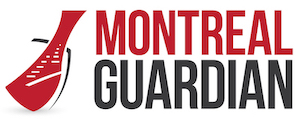Casino de Montréal confirmed a major Bad Beat poker jackpot payout on October 31. The total distribution across participating Québec poker rooms was CAD $2,188,545.66. The facility on Île-Notre-Dame was the location referenced inside the reporting chain, which means the biggest land-based name in Montréal ends up connected to the largest headline in the province for the end of October.

For the casino sector in this region, this is not a random anomaly. It arrives during a strong revenue period for the operator. Loto-Québec reported that casino and gaming hall revenues increased 17.6 per cent year on year to CAD $323.4 million for the quarter ended June 30. Those figures were confirmed in public releases in September, which makes the jackpot payout feel like a continuation of the same growth curve rather than a sudden spike. People who track Québec gaming trends would say this confirms that the momentum is consistent across summer peaks and autumn demand, not just a flash moment. Staff at local rooms also report fuller tables on weekend nights, adding a ground-level signal to the headline numbers.
What It Means for Montréal
Montréal continues to hold the strongest physical gaming brand presence in Québec. A regional success story like this one reinforces the magnetic pull of Casino de Montréal as a physical venue. Montréal residents and visitors hear about a multi-million-dollar jackpot, and it reinforces the sense that the biggest plays are still happening inside the city perimeter. It also influences weekend patterns and quick-turn decisions around where to spend money on entertainment.
This is also where digital context now threads into the same user behaviour. Because even if players enjoy the physical brand gravity of Montréal, many of those same people now evaluate online casino experiences that are available for real money when they are not physically on the island. They compare how identity is handled. They compare how quickly balances update. They compare how fast they can cash out. And they map those digital expectations back into their physical reference point. If the online version feels as smooth as the on-property version, they interpret both as professionally engineered and legitimate.
That is why this jackpot headline is not isolated. It lives in the same behavioural loop as digital casino use. Montréal remains the physical anchor, but the comparison layer now lives on the user’s phone.
The Digital Context Is Relevant Too
Québec’s online gaming situation is more complicated. A public report in recent months noted that as much as CAD $2.2 billion in online gaming volume leaks into unregulated platforms each year. That means the regulated land-based side carries more reputational weight simply because the online portion is not fully captured.
In Montréal specifically, that creates a contrast effect. Casino de Montréal is visible, audited, and well understood. Online gaming is accessible but fragmented. Users judge how quickly balances update, how verification works, and whether withdrawals feel instant or delayed. It is not just about odds or game selection anymore. Modern users compare how fast the payment loop feels and how clean the interface looks. If the experience online feels choppy, it cheapens the perception. If it feels smooth, it reinforces the idea that digital play can sit alongside a trip to the island property.
Why This Is Nationally Relevant
This is not only a Montréal story. It is a Canadian macro story. As physical casinos deliver verified payouts and digital casinos continue to appear in front of users at scale, the two categories influence each other. Players in Québec discuss the local jackpot, but they also evaluate online experiences for their own convenience. They sign in, compare settlement speed, check wallet compatibility, and measure whether customer support responds in minutes or hours.
